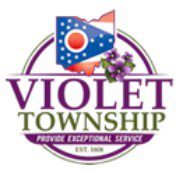
Dublin Family Care Case Study
December 11, 2020
Bloomington Medical Services Case Study
December 11, 2020Contributing data for patient-centric care:
Lower Lights Christian Health Center case study
by Dottie Howe, M.Ed., M.A.
At Lower Lights Christian Health Center in Columbus, health care isn’t solely medical. Whole-person wellness care offered at Lower Lights is more comprehensive so that it connects a patient to community resources that can result in a better quality of life for that individual.
That’s why this federally qualified health center serving lower-income patients wants to contribute as much patient data as possible for other clinicians and providers to get a comprehensive picture of a patient’s health and well-being. And it encourages other facilities and practices to follow its lead.
“In this day and age, sharing of health information is critical to ensuring our patients are receiving the best possible care,” says Dana Vallangeon, M.D., Chief Executive Officer of Lower Lights, who has ensured that the health center is a patient-centered medical home, serving some 11,000 patients, mostly at or below the federal poverty level.
“By sending and receiving records, we can prevent the duplication of labs, ensure our patients medication lists stay up-to-date and current as well as collaborate with other entities the patient might have seen for care other than us,” Dr. Vallangeon says. “It allows us to see the whole picture instead of just a few pieces of the puzzle which results in better, more comprehensive care for our patient that is also cost effective.”
Lower Lights is one of four practices/clinics that are using a service offered by the statewide CliniSync Health Information Exchange known as Contribute. This solution allows a facility or practice to publish a Continuity of Care Document – CCD for short – which tells treating providers about the patient’s demographics, vital signs, allergies, medications, problems, procedures, test results, family history, immunizations, alcohol and tobacco use, care plans and other pertinent clinical information.
To date, 131 “live” hospitals have contributed CCDs to what is known as the Community Health Record, a longitudinal view of a patient’s most recent encounters at hospitals. When all hospitals connect, there will be 151 Ohio hospitals within the CliniSync community. To date, there are Community Health Records on 11.7 million patients, which is high because this includes out-of-state patients from hospitals bordering Ohio as well as the Cleveland Clinic Foundation. In all, some 4,500 participants have access to the Community Health Record.
So, Lower Lights is a leading crusader in using Contribute to publish patient data for other clinicians to view. Not only does this save money by avoiding duplication of tests and procedures, it allows other treating providers to get the most recent snapshot of a patient’s health.
How contributing data enhances the medical neighborhood
Lower Lights also is part of the Health Collaborative of Greater Columbus’ Medical Neighborhood Referral Infrastructure project, which is using a referral tool within CliniSync to connect physicians and providers with social services agencies and organizations in the community. Some 25 organizations and agencies are part of this Medical Neighborhood in Central Ohio.
That’s where the overall wellness and patient-centered care comes in – patients often need spiritual, behavioral, psychological, economic, nutrition and other services within the community that these patients may not know how to access.
When physicians in the Medical Neighborhood can refer to these outside agencies, and when these organizations can refer patients to physicians, a closed-referral loop allows everyone to serve the needs of the patient, whatever they may be.
“We do utilize the Medical Neighborhood Referral tool to search other social service organizations who might be working with our patients. This gives us the opportunity to collaborate with those entities to ensure our patient’s needs are appropriately met,” Dr. Vallangeon says.
For example, a patient may need better food and nutrition, so Lower Lights could refer them to Meals on Wheels through the LifeCare Alliance. Or, an individual at a behavioral health facility could be referred to Lower Lights because he or she needs a primary care physician for medical treatment. In short, referrals can occur between medical and social service agencies.
“Utilizing a Medical Neighborhood gives us the ability to have the full picture of a patient’s health history which allows us to give the best, most comprehensive care. This works best when all health organizations are contributing,” Dr. Vallangeon says. “Collaboration between healthcare providers is important and this allows everyone an easy avenue to share information and work together to provide the best in quality care.”
To find out more about CliniSync, please go to http://www.clinisync.org
To find out more about the Medical Neighborhood, please go to http://www.hcgc.org/medical-neighborhood/




